#atlantic white sided dolphin
Explore tagged Tumblr posts
Text


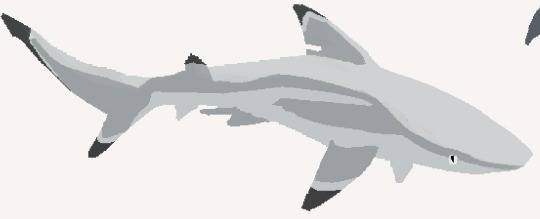
Some ocean residents for april's fools.
Because in my language "april's fools" is "pesce d'aprile", which translates to "april's fish".
667 notes
·
View notes
Text


#polls#animal polls#cetacea tournament#atlantic spotted dolphin#atlantic white sided dolphin#dolphin
11 notes
·
View notes
Text






(8-24-24)
#take.flight#my photography#wildlife photography#dolphins#Atlantic white sided dolphin#short beaked common dolphin
3 notes
·
View notes
Text
I went whale watching for the first time this season and saw about 50 Atlantic white sides dolphins, 70 seals, 1 fin whale, 5 minke whales, and 7 humpback whales.
I have seen a fin whale once before but it was pretty far and only for a second. So it was very cool to be able to see this one so well. Today I also learned fin whales are one of the only asymmetrical vertebrate species. "Fin whales have distinctive coloration—black or dark brownish-gray on the back and sides and white on the underside. Head coloring is asymmetrical—dark on the left side of the lower jaw, white on the right-side lower jaw, and the reverse on the tongue."
So all in all it was a really fun day.
5 notes
·
View notes
Text

Atlantic white-sided dolphin "Lagenorhynchus" acutus
Observed by urobleps, CC BY-NC
#Lagenorhynchus acutus#Atlantic white-sided dolphin#Cetacea#Delphinidae#cetacean#dolphin#North America#United States#Massachusetts#Atlantic Ocean#Gulf of Maine
58 notes
·
View notes
Text
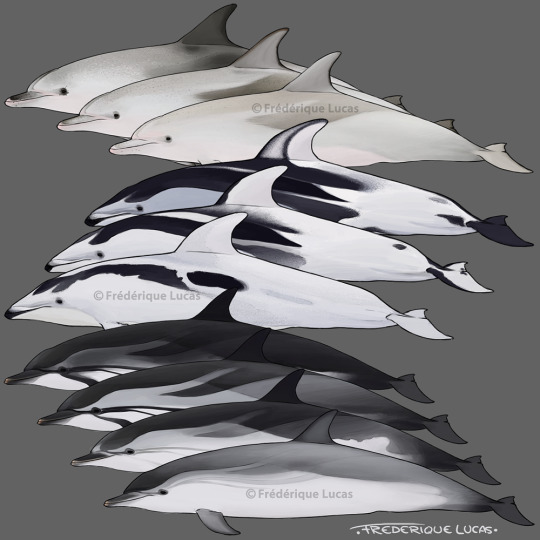
Cetacean colour anomalies existing as a gradient let's goooooo.
No seriously I love it when this is a thing. Still part of the colour anomalies poster(s) series. Currently 102 illustrations down, and quite a few more to go.
Depicted here are Atlantic spotted dolphin, Pacific white-sided dolphin and Striped dolphin, with various colour-altering afflictions.
#namtalk#illustrations#colour anomalies#albinism#leucism#melanism#dolphins#scientific illustrations#digital art#Atlantic spotted dolphin#Pacific white-sided dolphin#Striped dolphin
344 notes
·
View notes
Text

best photo i've ever taken i think
#(coconut thunk noise)#marine biology#cetaceans#dolphins#atlantic white-sided dolphin#hydrias things#internshipposting
20 notes
·
View notes
Text
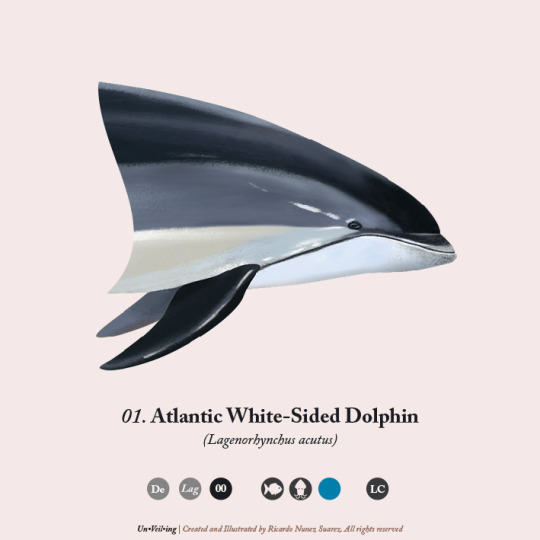
Atlantic White-Sided Dolphin. (Lagenorhynchus acutus) Least Concern. As always, I have enjoyed working with this family. Working with cetaceans is always enjoyable. The most amusing aspect is getting to know them. I must confess that my knowledge about cetaceans was quite limited, extending only to the commonly known dolphins and whales. However, compiling this information has opened my eyes, allowing me to marvel at the hidden wonders of the sea and emphasizing the importance of protecting it. _____________________ Thank you all for your support. If you want to know more about mammals consider joining my club. I post more animals there than the ones I post here, showing the full-body illustration of each animal, explaining the infographic and the illustration process, and how the family is being completed, apart from many other nice stuff. Here is the link: CLUB Another way of supporting me is spreading the word. A like, a follow, or a reblog are very much appreciated. See you next week and thank you.
#illustration#dolphins#atlantic white side dolphin#scientific illustration#cetaceos#cetaceans#delfin#drawing#wild animals#wildlife#artist on tumblr#animals#mammals#marine life
20 notes
·
View notes
Text
Atlantic White-sided Dolphins in Provincetown 06/26/26

View On WordPress
2 notes
·
View notes
Text
The Faroe Islands' yearly 'grind' kills over 150 dolphins, some with their calves, turning the sea scarlet
The Faroe Islands' yearly 'grind' kills over 150 dolphins, some with their calves, turning the sea scarlet
#animal rights#Atlantic white-sided dolphins#dolphin hunt#Faroe Islands#grindadráp#Opposition#tradition
0 notes
Text

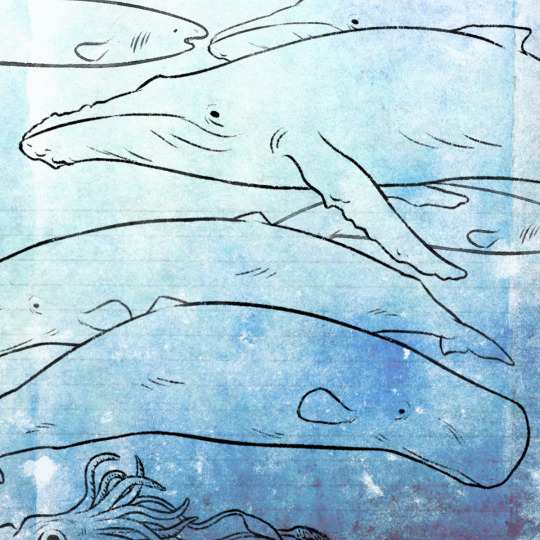
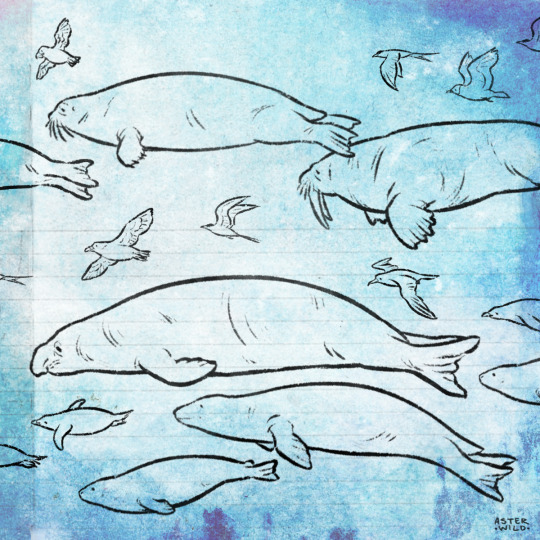
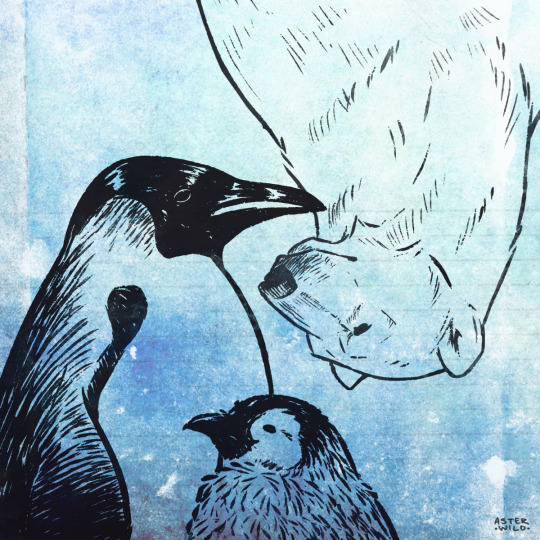
a closer look at the creatures from my marine polar wildlife design
bottlenose whale, harbor porpoise, narwhal, beluga, atlantic white-sided dolphin, minke whale, orca, pygmy right whale, spectacled porpoise, arnoux's beaked whale; greenland shark, humpback whale, sperm whale, colossal squid; atlantic puffin, bearded seal, walrus, arctic tern, sabine's gull, cape petrel, sooty albatross, southern elephant seal, chinstrap penguin, adelie penguin, leopard seal, ross seal; emperor penguins and polar bear
#i put too much effort into that design to not show off the creatures a little more 👍#really missing some notable visual characteristics in my line art-only file sorry lol#id in alt#animals#marine wildlife#whales#seals#penguins#polar bear
86 notes
·
View notes
Text

Redraw of an old drawing.

#omg guys#guys. I've coloured a sketch#thalassic#original character#sharks#blacktip reef shark#dolphin#atlantic white sided dolphin#regency fashion
12 notes
·
View notes
Text


#polls#animal polls#cetacea tournament#atlantic white sided dolphin#australian humpback dolphin#dolphin
9 notes
·
View notes
Text
🐬 Daily Cetacean Fact: 🐬
Atlantic Spotted Dolphin: The coloring of the Atlantic spotted dolphin varies as it grows, and is usually classified into age-dependent phases known as two-tone, speckled, mottled, and fused. Calves are a fairly uniform gray-white, with one or no spots. A juvenile is considered mottled when it develops merging gray and white spots on the dorsal surface and black spots on the ventral surface. A fused pattern is reached when dark and white spots are on both the ventral and dorsal sides. The spots become denser and spread until the body appears black with white spots at full maturation.


#atlantic spotted dolphin#spotted dolphin#dolphin#cetacean#🐬#daily cetacean#daily cetacean fact#facts about cetaceans#marine animals#marine biology#marine life#marine#marine mammal#respect the locals#shark blog#ocean animal#ocean life#ocean#I love dolphins
79 notes
·
View notes
Text
Sea Fetches and their Symbolic Meaning

mer interruption: the following text is from one of my favourite books. a part II will follow on, but do consider buying the book for yourself to get more interesting lore!

Animals can act as messengers as well as sources of inspiration, healing, and guidance. Those associated with the sea are generally considered wise and powerful. A totem animal or sea fetch can remain with you for your entire life, or it may come briefly into your life to guide you through a particular phase or turning point. Some are merely messengers that have one brief communication or idea to relay. You may also encounter one that may be difficult to deal with at first. This type of fetch usually appears to draw out a side of you that has been ignored. At first this fetch may seem fearsome or contrary, but in the long run what it helps bring to your surface level of consciousness can be very important. According to Caitlin Matthews, "the appearance of talking beasts in folk story denotes a shift of emphasis to a deeper level of awareness; such beasts are not an- thropomorphic animals, but archetypal forms." Animals that present themselves to you may symbolize who you are, or they may possess qualities that you would like to express in your life. Let's take a brief overview of qualities associated with several potential sea fetches. We'll look at them in more detail over the following pages.
Twelve Sea Fetches and Their Associated Qualities Albatross: Solitude, survival, the ability to wonder. Crab: Adaptability, clarity of vision, creativity, growth, renewal, rebirth. Dolphin: Communication, community, intuition, joy, serenity, strength. Manatee: Gentleness, ability to nurture, relaxation. Otter: Companionship, duty, friendship, loyalty, transformation. Penguin: Balance, independence, inner strength, wisdom. Polar Bear: Ability to nurture, protection, power, spiritual guidance, strength. Salmon: Cycles, determination, healer, progress. Sea Gull: Communication, freedom, responsibility, simplicity. Seal: Balance, creativity, curiosity, playfulness. Turtle: Fertility, immortality, longevity, opportunity, perseverance. Whale: Communication, community, creativity, cycles, harmony.
Some of the animals' qualities, such as the crab's, may surprise you. However, the crab is associated with health and vision (mental and psychic), and its energy is useful for protection from negativity. Perhaps the inclusion of the polar bear surprised you, too. While all of its relatives are clearly earthbound creatures, the polar bear is also known as the water bear and the ice bear. It is very much at home in the waters of the North Atlantic and Arctic Oceans.
A fetch can make itself known in various ways. In fact, its image may continually appear to you until you realize and acknowledge it. Thereafter, an appearance may indicate a need for contact or reassurance or it may be a signal that only you and your fetch will understand.
One way that birds communicate their presence and intent is through the gifting of a feather. I have been drawn to seagulls since I was a child and I have felt comforted by their calls. When I moved into my house in Maine and stepped out onto the back porch for the first time, I was greeted with the cry of gulls and a snowy white feather on my steps. I felt that I had truly come home. Still, as with the "signs" communicated by seashells, I believe that a touch of skepticism is healthy. The difference between a message and an ordinary experience is the timing and the undeniable feeling that it holds meaning. Keep your senses open, ask questions of yourself and the fetch, then trust your intuition. If you are still unsure, ask for further signs. If a fetch was communicating with you, you will receive them. The sea journey presented here* will help you find your sea fetch. Of course, there is the possibility that a mythical creature may present itself to you. Don't reject it out of hand. Go with the flow if your intuition tells you that there is something to be learned. Examine why you might be drawn to it and then research as much as you can about it. Our feelings and inner experiences are valid and do not require a stamp of approval from other people. Stay truthful to yourself. * mer interruption: i will post the sea journey separately! Below the cut are the 12 fetches in detail.

Twelve Fetches in Detail Let's look at these fetches more closely. But remember, this is by no means a complete list of potential candidates. Any animal connected with the ocean can act as your sea fetch. Sea birds-see the albatross and sea gull- have a special spiritual energy that crosses the realms of heaven, sea, and land, energetically linking the three permanent elements of air, water, and earth. But every creature has its own totemic power. Which one speaks to you?

Albatross This rare oceanic wanderer can show us the ethereal realms beyond this world and within our hearts. At one time the albatross was seen as the "restless spirits of drowned sailors" because of its cry and its endless soaring. With a wingspan greater than other sea birds', albatross can shepherd us on our journey and steer us in the direction we are meant to travel. Albatross teaches us the value of nurturing even the male sits on the nest as well as the skills to survive any turbulence we may encounter. With albatross as a guide we can learn to see the magnificence in the world around us and the worlds within us. Associations: Solitude, survival, the ability to wonder.
Crab The crab may seem an unlikely guide; however, it has a place in legend and is associated with magical powers. Crabs are found in all oceans. They shed their shells as they grow, which symbolizes renewal and rebirth. As a result, crab can instruct us not to be afraid to change and grow. Crab is adaptable and sensitive, with a clarity of vision that can teach us to keep an eye on our goals and unfold to our own potential. Although crab is shy by nature and stays near shore, we can learn how to come out of our shell and explore the spiritual depths that await our discovery. Crabs may walk sideways but from this we can learn how to sidestep trouble when necessary yet still meet important issues head-on. As a zodiacal sign, crab is associated with the moon and brings creative energies into play as a spirit guide. Associations: Adaptability, clarity of vision, creativity, growth, renewal, rebirth.
Dolphin The dolphin is an ancient symbol of love goddesses: its name comes from the Greek delphinos, meaning "womb." The Celts believed that dolphins carried departed souls to the Isle of the Blessed. To early Christians the dolphin symbolized the resurrection and salvation of Christ. Fond of people and music, dolphin helps us value communication, community, and play. Strength, joy, and serenity are qualities that dolphin can help us cultivate. Ancient mariners believed that dolphins could warn them about approaching storms. Their oracular ability can help us find the way to our individual enlightenment. Dolphin offers support in finding our unique path through life. Associations: Communication, community, intuition, joy, serenity, strength. Manatee In 1493 Christopher Columbus noted in his logbook that his ship encountered sea maidens, which contributed to the scientific order's name of Sirenia. Today, our best guess is that Columbus and his crew had spot- ted manatees. These graceful, slow-moving swimmers have a gentle demeanor and a great deal to teach us. Manatee is shy but curious, teaching us the importance of remaining open to experiences even if they seem frightening. A strong bond develops between a mother manatee and her calf, teaching us that nurturing and gentleness are of utmost importance in relationships. Manatee's lovely, relaxed pace beckons us to take our time and slow down. In rushing, we miss so much of the flavor of life. Associations: Gentleness, ability to nurture, relaxation.
Otter The Celtic people believed otters to be magical animals because they inhabit the netherworld where land meets sea. In legends, otters were shown to be helpful to travelers. The Celts called them "water dogs" because of their appearance as well as their speed and skill. Otter symbolizes companionship and encouragement. Such traits make otter a wise and dutiful guide. As legend suggests, with loyalty, friendship, and playfulness, otter guides us on a quest where the unexpected can occur and deep transformation begins. Associated with the sea god Manannan, otter knows how to keep confidences in order to serve. Otter brings brightness and joy into our world and shows us how to find it on our own. Associations: Companionship, duty, friendship, loyalty, transformation. Penguin Portrayed as a little tuxedoed comic, penguin is anything but this inaccurate caricature. Penguin teaches us that we cannot make quick judgments about people because things are not always what they seem. Penguin gives us an example of how we can be true to ourselves and march to our own rhythm. As fathers, male penguins usually share in the egg incubation process and nursery duties, reminding us that males can be as nurturing as females and also serving as a model of balanced energy. Able to hunker down and weather the harsh Antarctic winter, penguin also teaches us about strength and survival. Emperor penguins in particular spend a lot of time in winter twilight; thus they are familiar with that Otherworldly betwixt-and-between state. With the moon providing the brightest light for several months, penguin gains the wisdom of Luna and passes it to those under its guidance. Associations: Balance, independence, inner strength, wisdom.
Polar Bear In general, bears are earthy and grounded, but then there's the polar bear. These indefatigable swimmers, whose massive paws serve as paddles, are equally at home in the water and on land. It has been said that polar bears "could be considered the link between sea and land in the Arctic". Polar bear is a solitary wanderer, spending much of the year on pack ice, going where the floe takes it. As a nomadic wanderer, polar bear is an excellent guide for inner journeys. Strength and protection (especially in Otherworld realms) are hallmarks of polar bear's mystical and spiritual significance. Polar bear has also mastered the art of survival in the physical realm, demonstrating the power of selfless nurturing better than anyone. All who travel are guided by polar bear through the constellation of Ursa Major-the great bear. Polaris, the North Star, the final star in her tail, was used for navigation by sailors for centuries. But polar bear has a playful side, too: the ethereal spirited movement of the Aurora Borealis is also called the "dance of the bears." While polar bear teaches us the joy of dance and play, her semi-hibernation habits also show us the importance of stillness: self-work begins in active stillness. Associations: Ability to nurture, protection, power, spiritual guidance, strength. Salmon Celtic people considered the salmon the oldest and wisest of all creatures. In some legends, salmons were the guardians of sacred pools and wells. Salmon teaches us about determination, fluidity, and cycles. With its exhausting journey home-upstream to its spawning grounds salmon reveals the importance of epic life-changing voyages, unstoppable progress, and the capacity to overcome great obstacles. A leap of faith can be exceedingly frightening and yet the most healing of experiences. Salmon can help us find focus for the soul, which can carry us through any turbulence. Follow salmon if you seek wisdom and inspiration, and you will be led on a journey through the depths of your soul. Associations: Cycles, determination, healing, progress. Sea Gull Sea gulls seem to come in all shapes and sizes, but the quintessential is the herring gull. Stately and large, with a fifty-eight-inch wingspan, this gull is indeed a master of the wind. For centuries mariners relied on the flight line of gulls to find land-so this bird reminds us that duty and responsibility are to be gladly assumed and never shirked. Sea gull also teaches the importance of clear communication. We can gain more nuanced un- derstanding by asking mindful questions. From sea gull we learn adaptability, helping us go with the flow when necessary, and we see how and when to clear things from our life. Through sea gull's lessons we can learn to soar to new heights, finding freedom of spirit as well as the beauty in simple things. Associations: Communication, freedom, responsibility, simplicity.
Seal Stories abound concerning these playful, active creatures. The legendary selkies of Scotland were said to live most of their lives as seals, but on certain nights they came ashore, shedding their skins and turning into beautiful women. In Iceland, seals were said to come on shore on St. John's night (Midsummer, June 23) to dance on the beach. Celtic people believed them to be guides for sailors and fishermen because of their link to the powers of the deep. As a guide, seal helps us center and find focus in our life. Seal's Otherworld associations aid us in maintaining the deep level of spirituality we need to keep in balance. The shy but curious nature of seal leads us to enlarge our own capacity to explore the world through our creativity. Associations: Balance, creativity, curiosity, playfulness. Turtle Sea turtles spend their lives at sea, most often as solitary wanderers of the deep. Traveling hundreds of miles to lay eggs on the beach where they themselves and their ancestors before them hatched, turtles have earned the name of "ancient mariners." Through this feat of navigation, turtle teaches us to pay attention and remain aware about the truly important matters in life. In Eastern mythology, turtle symbolized longevity and immortality, fertility and perseverance. Through these attributes, turtle teaches us how to awaken to opportunity those presented to us as well as those we create for ourselves. Associations: Fertility, immortality, longevity, opportunity, perseverance.
Whale The largest creature on earth derives its name from the Norwegian word hval, meaning "wheel." And "wheel-like" aptly describes whale's diving motion. It also implies cycles, which are inherent in whale's migratory and musical patterns. Through these habits, whale reveals the importance of freeing our creativity and remembering to sing. Like all marine mammals, whale's rugged and adaptable ancestors left the changing environment on land about 55 million years ago for life in the sea. Perhaps this fact can remind us that we can always change our lives around. Whale's sounding dive teaches us the value of exploring our inner depths. Communication and community are other areas where whale guides our focus for developing cooperation and harmony. Associations: Communication, community, creativity, cycles, harmony.

Text - Sea Magic - Connecting with the Ocean's Energy, Sandra Kynes Cute sea dividers - kaitsawamura
Intended for reference and educational purposes - please supplement with your own research and knowledge!
13 notes
·
View notes
Text

Atlantic white-sided dolphin "Lagenorhynchus" acutus
Observed by sarasimma, CC BY-NC
#Lagenorhynchus acutus#Atlantic white-sided dolphin#Cetacea#Delphinidae#cetacean#dolphin#North America#United States#Massachusetts#Atlantic Ocean#Gulf of Maine#Massachusetts Bay
43 notes
·
View notes